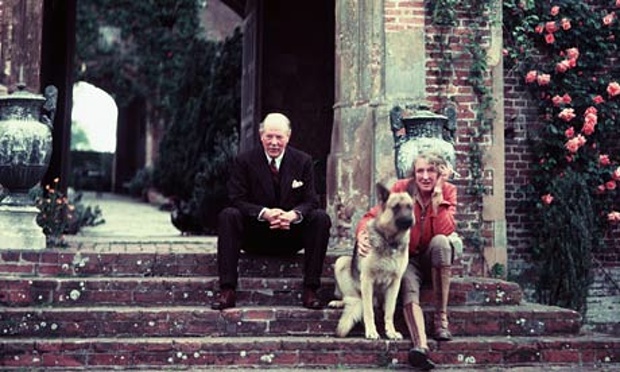She may have been born near the end of the 19th Century, but Vita Sackville West’s life was every bit as full of adventure, creativity and scandal as it may have been had she been born in an era of free love and expression. A member of the famous Bloomsbury Set, today she is most famous for two things – conducting a slightly scandalous private life and creating one of the most beautiful gardens recorded. She was also a novelist, poet, gardening expert and biographer, a renaissance woman born in a time when being one was no mean feat. A true individual with extraordinary creative talents, Vita Sackville West is a woman we at KOTUR can think of so many reasons to admire.
Born in 1892, Vita was an English aristocrat and the only child of the Honourable Lionel Sackville-West and his Spanish wife Victoria. She was raised at Knole House, a former royal palace in Kent thought at one point to be so large it had a room for every day of the year. Adhering to England’s laws of primogeniture recommending that estates be left to a male heir, Vita lost out on living at Knole in later life. After he died, her father left the house and estate to his brother in a move that would haunt Vita for the rest of her life and inspire her to create a castle she could call her own. Decades later, she would do just that at Sissinghurst.
Vita married the equally English diplomat Harold Nicholson in 1937. They had two children and a marriage that lasted her lifetime. Yet their union is really known for two things – first, it’s openness, and second, the garden they created during it. Harold and Vita were both known to have had several affairs. Eleven years after her death, the details of these were revealed when their son Nigel published Portrait of Marriage, a collection of his mother’s writings unveiling details of her relationships with women – Virginia Woolf among them.
Her love life may have been considered unconventional, however, the other great passion of Vita’s life was rather more traditional. She was a passionate gardener. Untrained but extremely accomplished, she wrote a regular gardening column in the Observer newspaper for 15 years, through which her ideas and ability to create the quintessentially romantic English Country Garden gained global notoriety. Together with her husband, Vita realised the very epitome of that garden at Sissinghurst, an old Elizabethan manor they had fallen in love with in 1930 and bought just three weeks later. When they moved in, the house itself was dilapidated. Vita and Harold set about living in several rooms around the estate. Their bedrooms were in a cottage, their library with its chintz sofas and book lined walls was established in its former stables, whilst the ground floor of the old castle was used for entertaining, and the tower as Vita’s study.
When it came to the outdoors, Vita and Harold shared duties. It was Harold who was responsible for the creation of a garden made up of several ‘rooms,’ each separated by carefully cut hedges that acted as walls and interlinked by a series of natural ‘doors.’ Inside each nook and cranny, Vita then planted with abundance. She once wrote in her gardening column, “always exaggerate rather than stint” as advice, and she more than lived by her own rules. Often written of as “England’s rose queen”, Vita’s garden was simply packed with plants. They tumbled over walls, spilled out of crevices and filled flowerbeds to the brim. She called her rose garden a ‘tumble of roses and honeysuckle, figs and vines’ and her famous White Garden sparked a global trend for planting entire beds of the same colour. They planted meadows of wild flowers, and an orchard that was half garden, half wilderness in a wonderfully free approach. Vita died in 1962, Harold four years later. Today, Sissinghurst is owned by the National Trust and remains one of the most famous gardens in the world.
For some, Vita Sackville West exists as the ultimate example of the green fingered, slightly eccentric English Chatelaine, an aristocratic queen of her own beautiful garden. For others she is a beacon of bravery, a woman who lived life according to her own rules. Whichever way you choose to view her, she was a fearless romantic, a true individual and a visionary.
Photo Courtesy of Jonathan Buckley, Red Features, Corbis, Leonard Woolf, Bunnies Garden, Philip Turner, gettyimages, National Trust John Hammond, The letters of Vita Sackville West


